Marrakech’s ancient medina contains architectural treasures hidden behind unassuming mud-brick walls. These traditional Moroccan houses, known as riads, feature interior courtyards filled with fountains and fragrant gardens, creating a private oasis amid the bustling souks.
Originally built as family homes for wealthy merchants and nobles, many riads have been lovingly restored as boutique accommodations that offer guests an authentic immersion into Moroccan design, hospitality, and history. Here is a list of 20 historic riads in Marrakech that deserve appreciation as destinations in their own right.
Each tells a unique story through its architecture, decor, and atmosphere.
Riad El Fenn
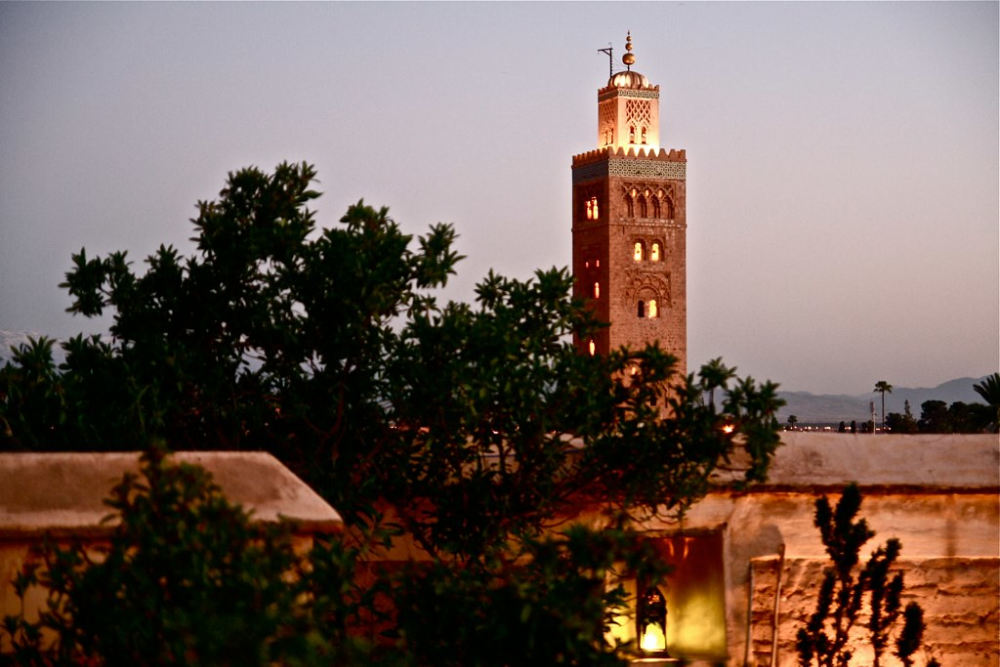
This expansive property, owned by Richard Branson’s sister, Vanessa, combines seven traditional houses into a labyrinthine retreat adorned with contemporary Moroccan art. Rooftop terraces offer panoramic views of the Atlas Mountains and Koutoubia Mosque minaret while providing multiple swimming pools for cooling off.
Original architectural elements, including cedar wood ceilings and intricate tadelakt (polished plaster) work, showcase traditional Moroccan craftsmanship alongside carefully curated modern design pieces.
La Maison Arabe
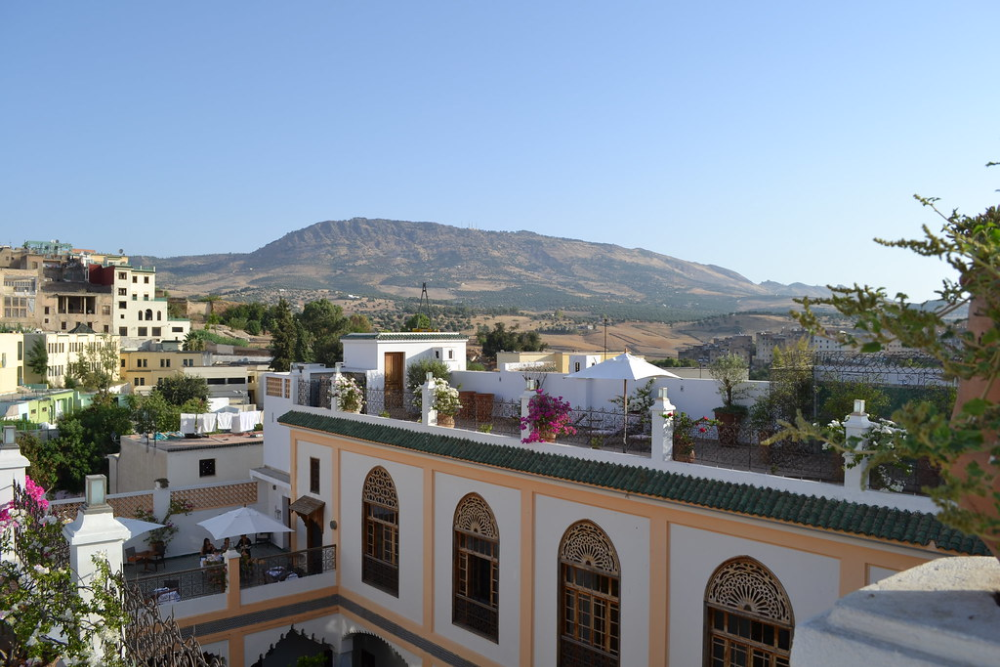
This pioneering riad-hotel, established in 1946, preserves its historical significance as the first restaurant in the medina permitted to serve foreigners. Traditional Moroccan craftsmanship, including zellige tilework and carved plaster, complements the antique furnishings throughout public spaces and guest rooms.
The property houses its cooking school, where guests learn traditional Moroccan dishes in the same spaces where the royal family’s former dadas (female chefs) once prepared royal feasts.
Like Travel Pug’s content? Follow us on MSN.
Riad Kniza
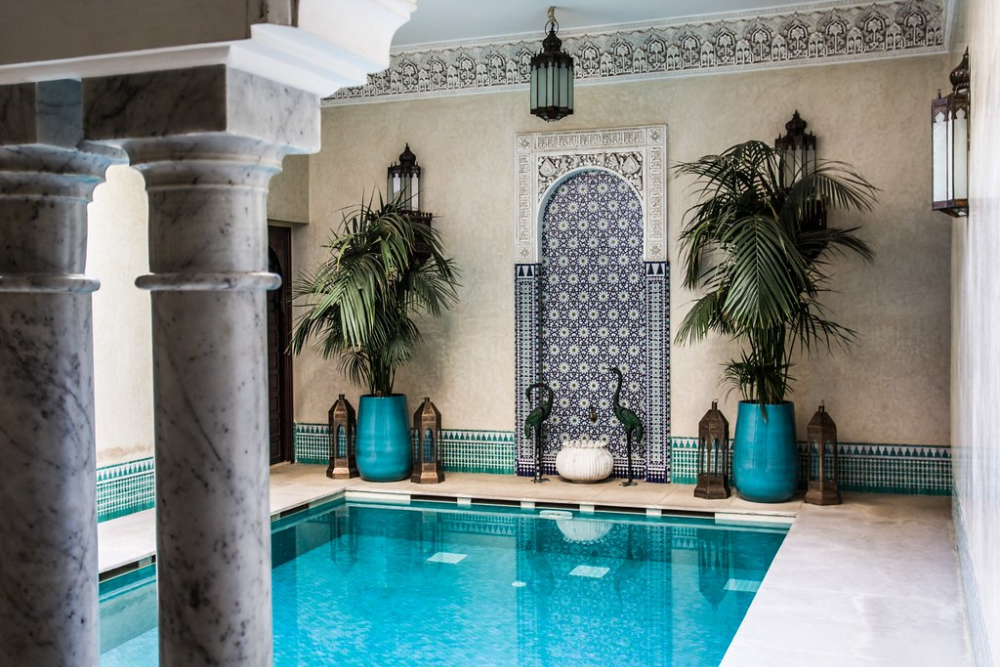
Owned by one of Marrakech’s most respected antique dealers, this meticulously restored 18th-century riad showcases museum-quality Moroccan artifacts and furnishings. Master craftsmen spent three years restoring the intricate plasterwork, painted cedar ceilings, and zellige mosaics using traditional techniques.
The owner’s family has served as royal tour guides for generations, bringing historical context and authentic connections to the guest experience.
Riad Dar Darma
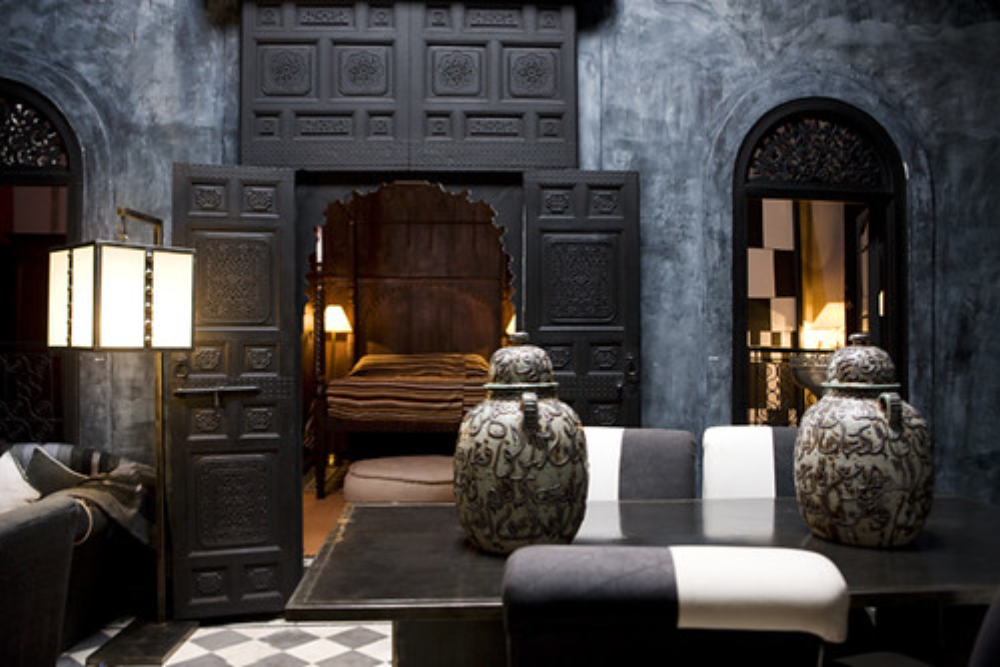
This 17th-century palace once belonged to a wealthy spice merchant who imported the finest materials from his travels across the Ottoman Empire. Massive cedar doors with traditional brass studs open into a world of refined luxury featuring antique Syrian furniture and Fez ceramics.
Original architectural features, including a hammam with star-shaped skylights, create an authentic historical atmosphere enhanced by modern comforts.
Riad Joya

This restored merchant’s house employs a minimalist design that allows traditional architecture to take center stage without competing decorative elements. The seven suites draw inspiration from North African cultures, including Berber, Tuareg, and Ottoman influences expressed through carefully selected artifacts.
The tranquil atmosphere provides a contemplative counterpoint to the sensory intensity of the surrounding medina.
Like Travel Pug’s content? Follow us on MSN.
Le Riad Yasmine
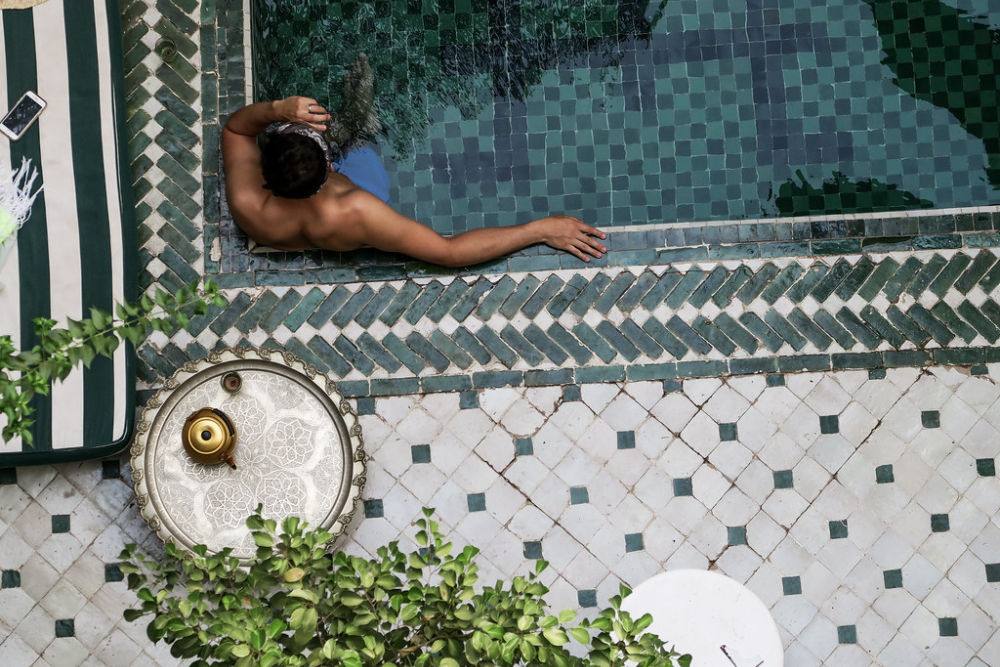
Famous for its Instagram-worthy green tile pool surrounded by tropical plants, this small riad balances photogenic settings with authentic Moroccan craftsmanship. Handcrafted furniture and traditional textiles create comfortable spaces that feel both timeless and contemporary.
The intimate scale with just seven rooms maintains the feeling of a private home rather than a commercial hotel.
Riad Mena & Beyond
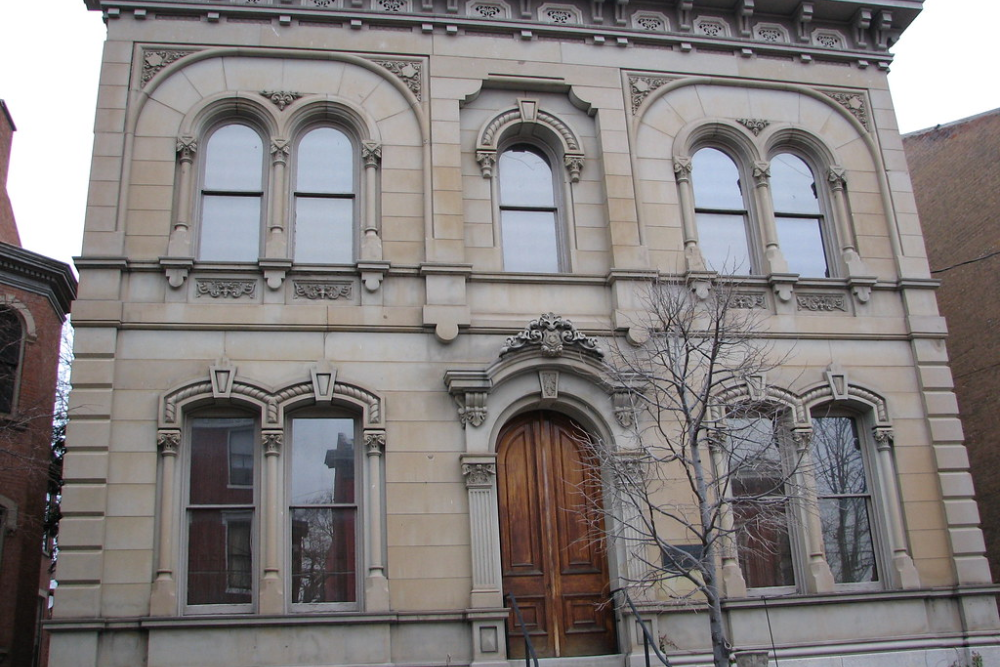
This elegant 19th-century residence combines traditional Moroccan elements with mid-century modern furnishings that complement rather than compete with the historic architecture. The former hammam has been transformed into a serene space for private dining beneath original skylights shaped like stars.
The owner’s background in fashion and photography influences the sophisticated aesthetic that respects tradition while embracing thoughtful, modern interventions.
Riad de Tarabel

This colonial-era mansion incorporates French design influences while honoring Moroccan architectural traditions through its central courtyard structure. Antique furniture from Napoleonic-era France creates an atmosphere reminiscent of when Morocco maintained close ties with European powers.
The property’s mature orange trees and climbing vines provide fragrant natural elements within the historic structure.
Like Travel Pug’s content? Follow us on MSN.
Riad Enija

This sprawling property comprises five interconnected historic houses featuring some of the medina’s finest examples of traditional Moroccan architecture—soaring columns inspired by Andalusian design support intricate archways surrounding an expansive courtyard with ancient citrus trees. The property’s Dar Kaber suite occupies what was once a private hammam, featuring extraordinary plasterwork and geometric tile patterns preserved from the original structure.
Dar Les Cigognes
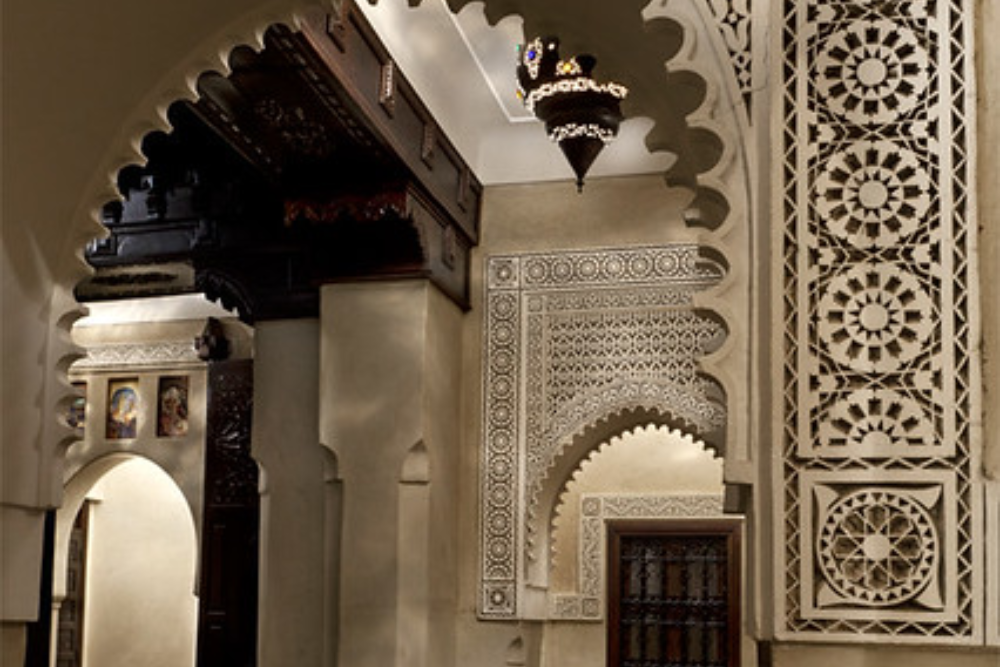
This former merchant’s home takes its name (‘House of Storks’) from the birds that nest atop the nearby royal palace walls visible from its rooftop. The historic kitchen hosts cooking classes where guests learn traditional Moroccan techniques using ingredients from the nearby spice markets.
Original architectural features, including a functioning hammam with traditional hot stone beds, provide authentic cultural experiences within the historic space.
Riad Jardin Secret

This centuries-old residence features one of the medina’s most extraordinary rooftop gardens, complete with cacti, palms, and flowering plants surrounding outdoor living spaces. The owners’ background in fashion design influences the property’s aesthetic, which combines traditional Moroccan elements with carefully selected contemporary pieces.
Traditional craftsmen employed historic techniques to restore architectural features, including intricate plasterwork and painted wood ceilings.
Like Travel Pug’s content? Follow us on MSN.
Riad Adore
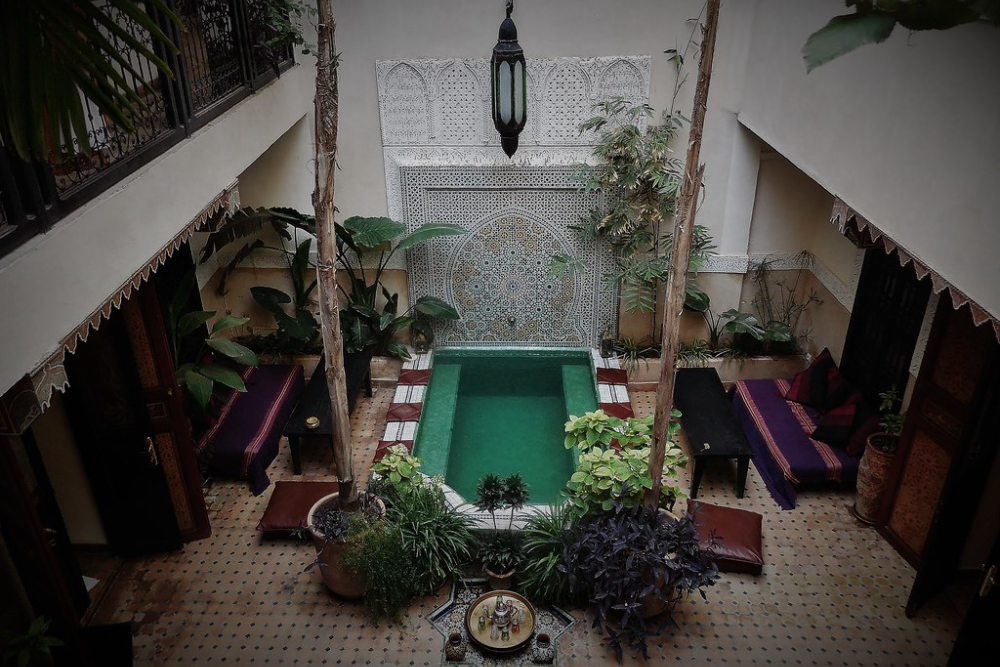
This elegantly restored residence balances historic architectural elements with contemporary comforts designed for modern travelers. The central courtyard features a traditional design with clean lines that create a peaceful atmosphere away from the medina’s intensity.
The original fountain continues to provide the soothing sound of flowing water that has cooled this space for generations.
Riad Idra
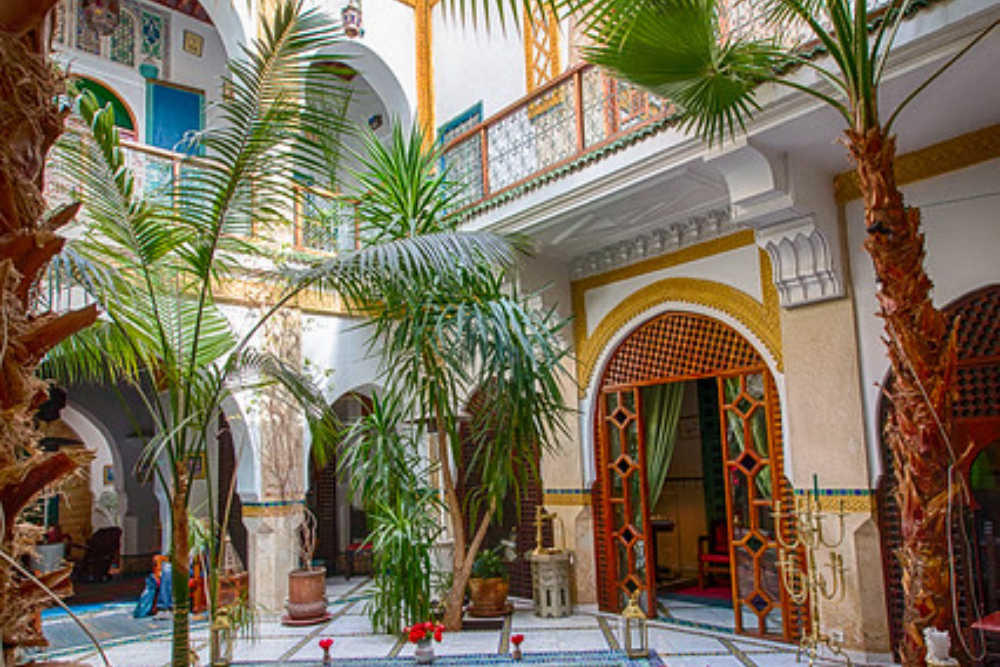
This aristocratic residence showcases architectural details reflecting Morocco’s diverse cultural influences, from Berber to Andalusian styles. The seven uniquely designed suites feature traditional tadelakt walls in subtle earth tones complemented by hand-selected antiques.
The rooftop terrace offers multiple levels for dining, sunbathing, and evening relaxation with views across the historic city.
Riad Farnatchi
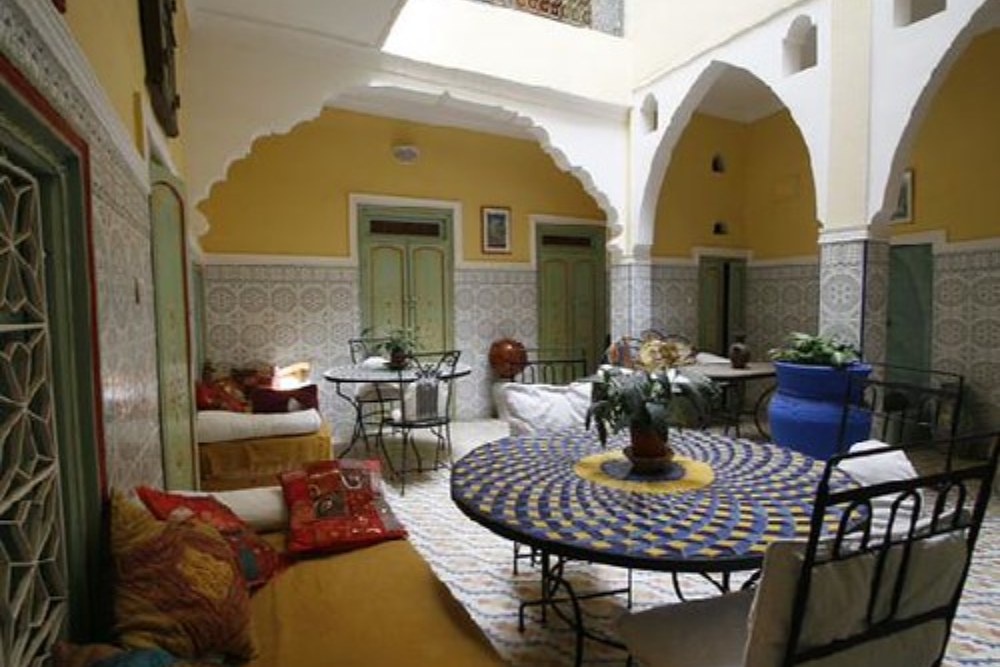
Created from five traditional houses, this luxury property maintains intimate spaces despite its generous proportions spanning several historic buildings. Decorative elements, including antique wedding blankets and hand-beaten silver lanterns, create an atmosphere of refined authenticity throughout the interconnected spaces.
The on-site hammam features skylights shaped like stars that cast dappled light across marble surfaces, continuing a centuries-old bathing tradition.
Like Travel Pug’s content? Follow us on MSN.
Riad BE Marrakech

This 400-year-old merchant’s home features one of the medina’s most photogenic central courtyards with classic blue and white zellige tile work. Original cedar-wood doors with traditional metal studs open into spaces, combining authentic architectural elements with modern artistic touches.
The rooftop conservatory provides a climate-controlled space for enjoying views across the historic city during Marrakech’s hottest months.
Dar Zemora
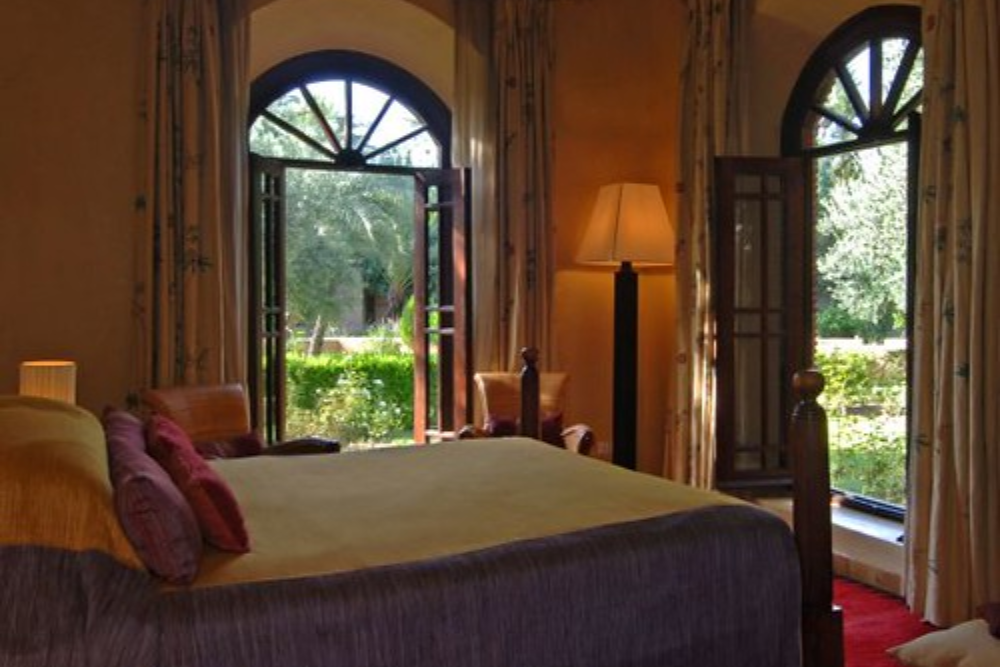
Located in the Palmeraie just outside the ancient city walls, this historic country estate combines traditional riad architecture with the spaciousness of a rural property. Ancient olive groves and mature gardens surround the historic structure, creating a peaceful retreat that maintains connections to Marrakech’s agricultural heritage.
The property’s traditional hammam uses water from its well, continuing bathing traditions established during the property’s construction.
Riad Emberiza Sahari
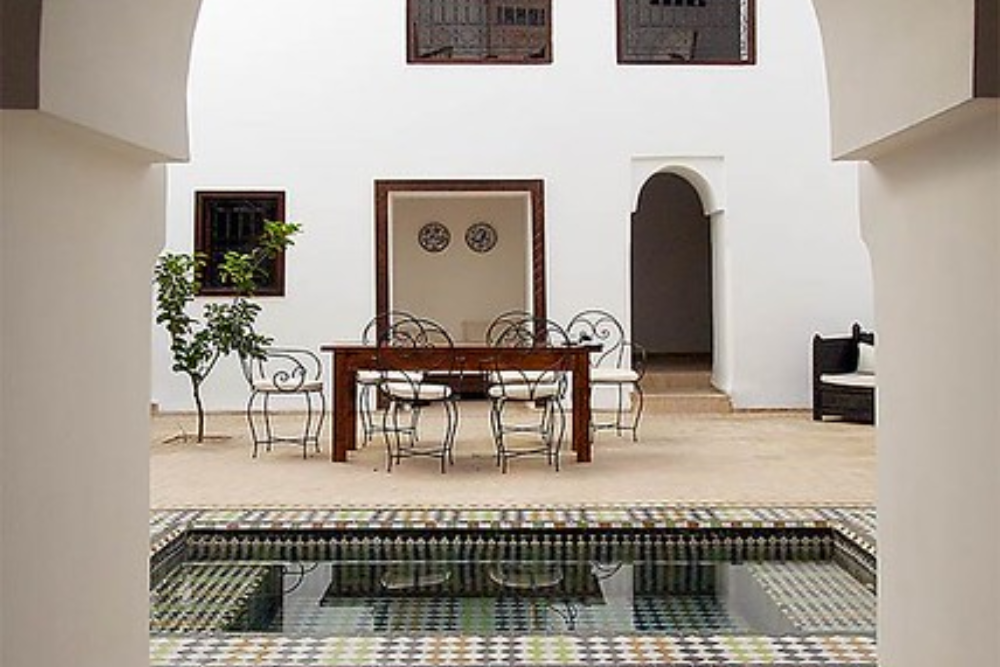
This former palace within the medina walls features extraordinary plasterwork created by master craftsmen during Morocco’s artistic golden age. The central courtyard features an ancient irrigation system that still functions to nourish citrus trees and cooling plants.
Traditional wooden moucharabieh screens create intricate shadows across interior spaces while providing privacy and air circulation as they have for centuries.
Like Travel Pug’s content? Follow us on MSN.
Riad Olema & Spa
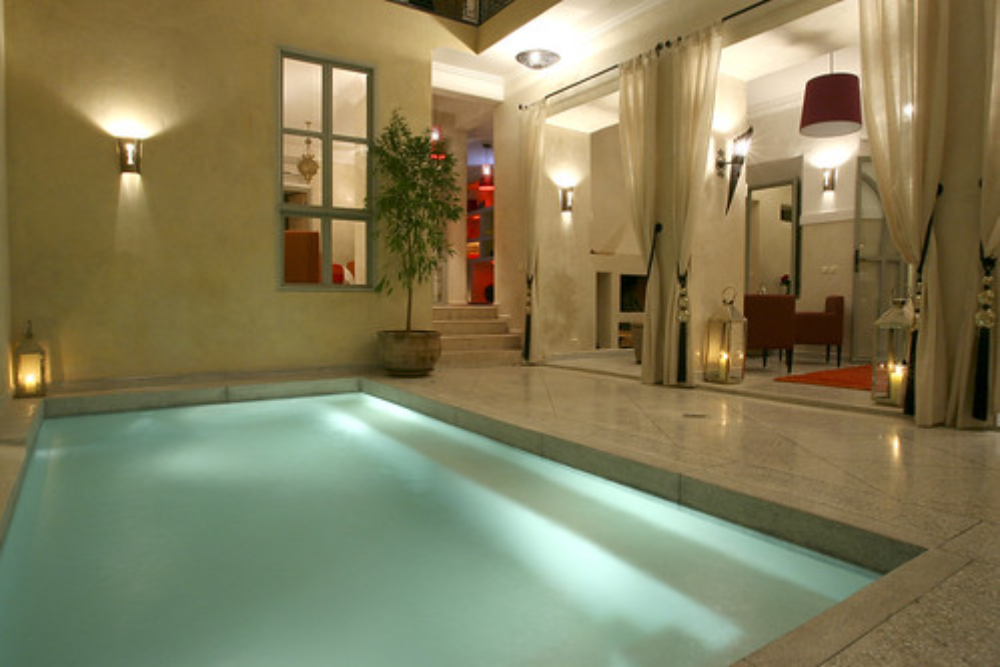
This restored 18th-century residence balances historic preservation with contemporary Moroccan design from the kingdom’s current generation of artists. The traditional hammam has been expanded into a full spa facility while maintaining authentic ritual bathing practices.
Ancient wooden ceilings feature hand-painted botanical motifs recently restored by master craftsmen using traditional pigments and techniques.
Riad Noir D’Ivoire
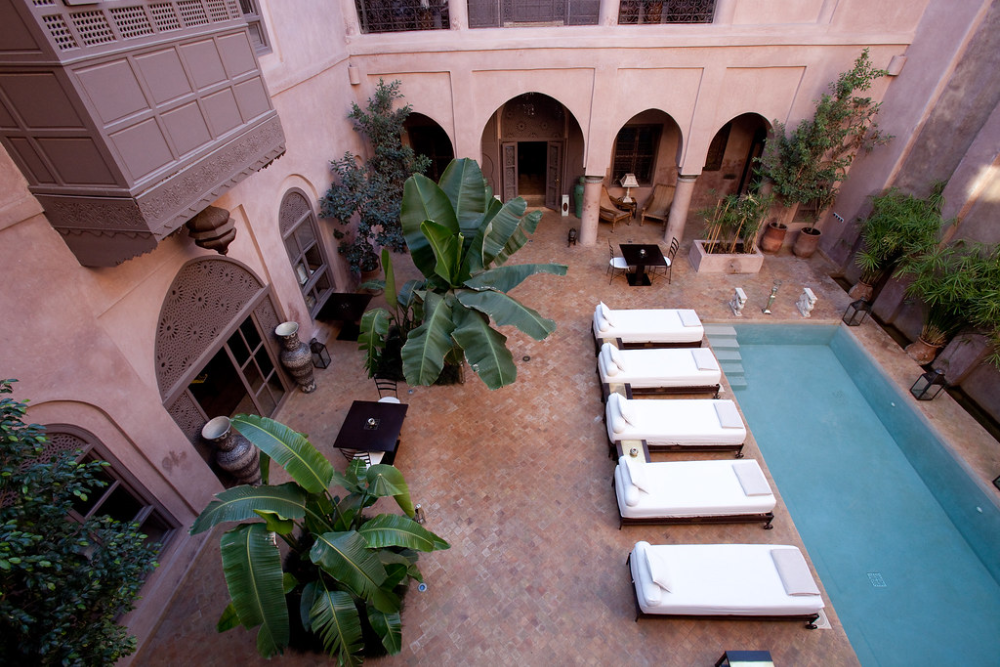
This expansive property, created from several historic homes, features a dramatic central courtyard flanked by carved cedar columns and intricate plasterwork. The owner’s collection of African art adds unexpected visual elements to the traditional Moroccan architectural envelope.
A tame gazelle once roamed the courtyard, continuing the Moroccan tradition of incorporating nature within domestic architecture.
Riad Azzar
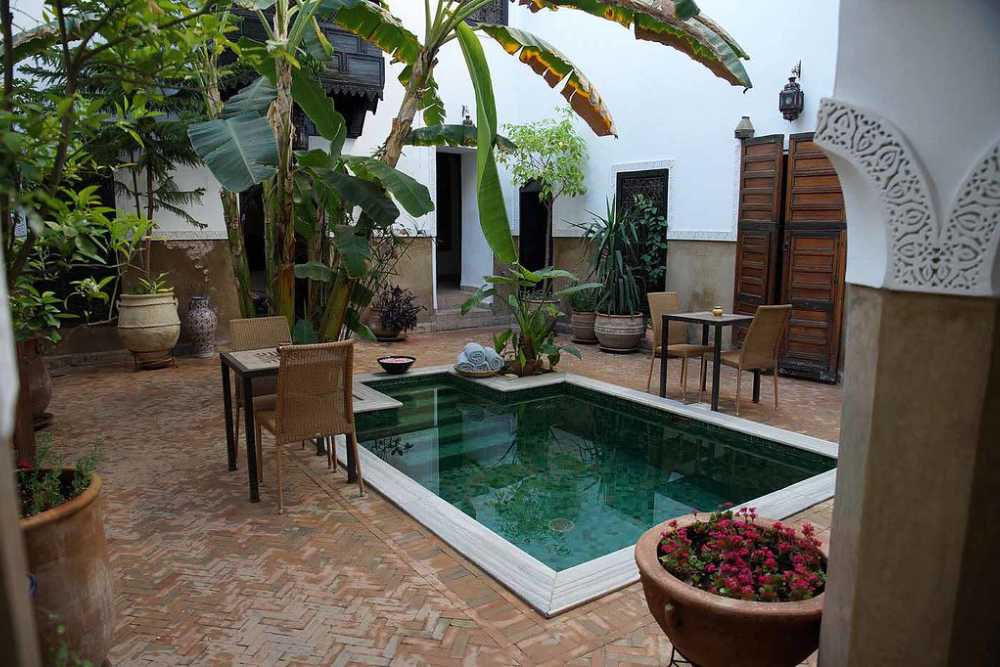
This former merchant’s home showcases some of the medina’s finest preserved woodwork, including cedar beams carved with calligraphy and botanical motifs. The central courtyard features an ancient orange tree said to have been planted when the house was built, which provides fragrant blossoms and fruit in season.
Traditional craftsmanship, including intricate zellige mosaic work, has been painstakingly preserved throughout the historic structure.
Like Travel Pug’s content? Follow us on MSN.
Moroccan Architecture as a Living Heritage
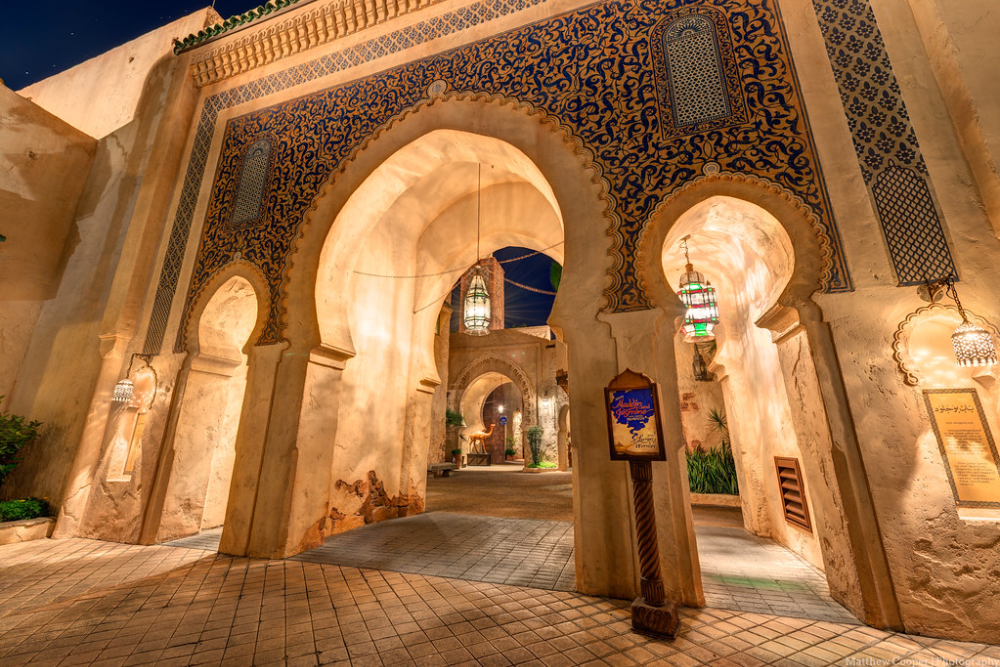
These historic riads represent more than just beautiful accommodations—they embody Marrakech’s architectural heritage and cultural traditions preserved through thoughtful restoration and continued use. By maintaining these historic structures as living spaces, owners and guests participate in the ongoing story of Moroccan domestic architecture.
The transition from private family homes to small hotels has allowed these architectural treasures to survive and thrive while sharing their beauty and history with visitors from around the world. Staying within these historic walls offers an immersive understanding of Moroccan design philosophy and cultural values that no museum visit could provide.
More from Travel Pug

- Cities Growing so Fast You Won’t Recognize Them in 10 Years
- 13 Destinations Where Tourists Regularly Regret Their Trip
- 20 Obscure WWII Sites Even History Buffs Don’t Know About
- 10 Under-the-Radar Mountain Towns That Are Both Affordable and Beautiful
- Remote Villages in Europe Where You Can Live for Free in Exchange for Work
Like Travel Pug’s content? Follow us on MSN.
